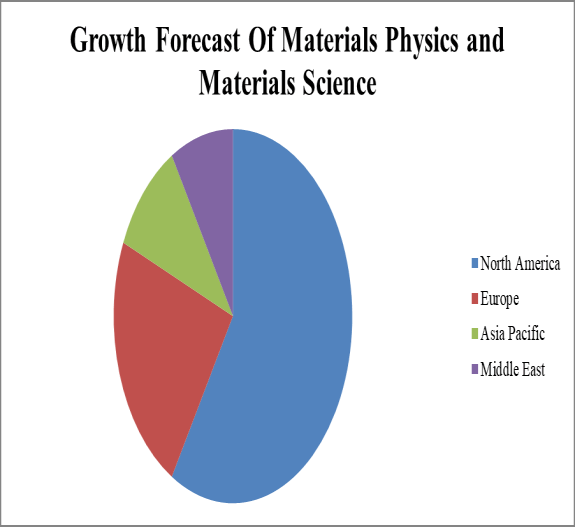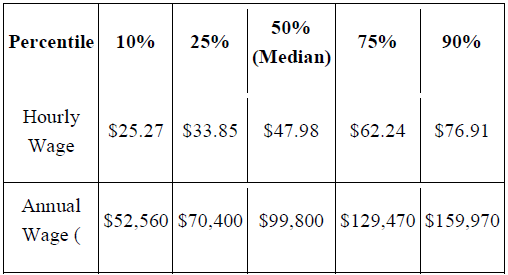Market Analysis, Res Rep Metals Vol: 3 Issue: 2
25th International Conference on Advanced Materials & Nanotechnology
Bruce Hudson
Syracuse University Professor, Chemistry, E-mail: bshudson@syr.edu
Abstract
Keywords: Metals
Market Analysis
Advanced Material Science or Materials Engineering is the study of all of the materials we see around us every day. Materials Science or Engineering forms a bridge between the sciences and engineering. It allows theory to be put into practice in a way which benefits everybody. Materials Scientists or Engineers look at all of the different groups of materials, metals and alloys, polymers, ceramics and composites. They develop new materials for new applications, improve existing materials to give improved performance and look at ways in which different materials can be used together.
The global market is projected to reach $6,000 million by 2020 and register a CAGR of 10.2% between 2015 and 2020 in terms of value. The market growth is speculated to be driven by the increasing demand for aerogel materials from oil and gas and construction applications. The Europe market is estimated to be growth at a steady rate due to economic recovery in the region along with the increasing concern for the building insulation and energy savings. Newly released figures for 2012 put BLS Code 19-2032 (an occupational group encompassing materials scientists) in 82nd place in yearly wages. The group, which includes 7,970 employees across the country, posted an average annual salary of $89,740.

The advanced materials directorate has in the past financial year developed a baseline study on the sector in South Africa. The study entailed understanding the capabilities, opportunities, global trends, gaps and challenges of the industry, with a specific emphasis on Titanium, nanomaterials, advanced composites and Bio-ceramics and industrial applications in aerospace, automotive, construction, electronics, medical, packaging and renewable energy
Scientific index of countries’ ability to take advantage of emerging technologies indicates that the US, Germany, Taiwan, and Japan have the combination of academic excellence, skilled work forces, and capital to ensure effective technology transfer. Corporate research and private funding were thought to have surpassed government funding figures as far back as 2003. But China is speculated to spend US$2.25 billion in nanotechnology research while the US will spend US$2.18 billion. In real dollar terms, adjusted for currency exchange rates, China is only spending about US$1.3 billion to the US $2.18 billion.
Nano materials Market was valued at $14,741.6 million in 2015, and is expected to reach $55,016 million by 2022, supported by a CAGR of 20.7%. Nano materials can be defined as the materials with at least one external dimension in the size range of approximately 1 to 100 nanometers.
United States Materials Science industry:
Research and study the structures and chemical properties of various natural and synthetic or composite materials, including metals, alloys, rubber, ceramics, semiconductors, polymers, and glass. Determine ways to strengthen or combine materials or develop new materials with new or specific properties for use in a variety of products and applications. Includes glass scientists, ceramic scientists, metallurgical scientists, and polymer scientists.
Percentile wage estimates for this occupation:

Scope and Importance
The field of MSE has become a basic instrument in bringing about technological changes. Discoveries of new materials and improvements to old ones—all undergirded by deeper understanding of the intimate relations between the processing, composition, and structure of materials on the one hand, together with their properties and function on the other—lead repeatedly to higher performance and efficiency in existing technologies (e.g. improved process for extracting titanium) and to the creation of new ones (e.g. silicon and the solid-state electronic industry). By the same token, a breakthrough in understanding the physics and chemistry of biocompatibility of synthetic materials could have a dramatic effect on the prosthetics industry.
MSE is both creative and responsive. New insights gained, often unexpectedly, through research on the properties and phenomena exhibited by materials can lead through development and engineering stages to new products and applications of benefit to mankind. But often it is the perception of some potential market or societal need for a product that stimulates the appropriate engineering and development and, in turn, the support of considerable applied and even basic research.
Whether MSE is operating in a creative or a responsive mode, it is having a technological and social impact at a very basic level. Materials as such are usually not very visible to the public that is primarily concerned with end-products and tends to take materials for granted. Yet materials are the working substance of all hardware used in all technologies and are crucial to successful product performance. Between the introduction of materials and the final product, there are often numerous manufacturing stages where extra value is added. Thus, an improved or new material may be decisive in determining the success, usefulness, or social value of a product, even though the cost of the material or the improvement might be very modest compared with the total product or social value. In this sense, materials can frequently be said to exert high economic leverage. Color TV has been made possible by the development of special phosphors; synthetic fibers, such as nylon and dacron, have made drip-dry apparel possible. There are also instances of low leverage in which materials improvements, while useful, do not exert such an enormous change in the end-product or in social patterns; such an example might be the change in steel used for making cans. Materials, and industries devoted completely to them, may represent about one-fifth of the Gross National Product, but without them there would be no Gross National Product.
Materials are often looked upon as relatively unspecific media which may find their way into a great variety of end-products. New materials or improved ones may lead to a whole variety of end-products involving widely different industries. For example, fiberglass lends itself for use in pleasure boats, as housing construction material, and as automobile bodies. Hence, materials can be said to have a relatively high degree of proprietary neutrality. One consequence of this situation is that materials research often forms a more neutral, yet broadly applicable, base for governmental support and cooperative ventures among companies than does research in various end-product technologies.
Besides the direct application of MSE to technology, innovation in the field can have important consequences for materials demand and consumption patterns, the consumption of energy, and the quality of the environment. MSE can play a vital role in meeting man’s needs for better transportation equipment, prosthetic devices, and the generation, transmission, and storage of energy. But by wreaking such technological changes, it can often change drastically the need or consumption patterns for materials and energy. New materials made from more abundant raw materials can often be developed as substitutes for old ones made from scarcer or ecologically less desirable raw materials; new ways can often be found for performing needed technological functions, e.g. transistors have replaced vacuum-tube triodes as basic amplifying elements in electronic circuits, and in more recent years integrated circuits replaced boxes of complex electronic equipment made up of many components. Looking ahead with another example, present work in certain forms of levitated ground transport, if successful, could lead to greatly increased demands for new magnetic or superconducting alloys. Or again, development of suitable catalysts based on relatively abundant materials could significantly reduce demand for platinum catalysts for treating automobile exhaust gases and for use in chemical processes.
As regards energy-consumption patterns, MSE has much to contribute in all phases—making new forms of generation possible, e.g. by finding solutions to the problem of fuel swelling under radiation damage in nuclear reactors; enabling new forms of electrical power distribution, e.g. through superconducting or cryogenic transmission lines; finding more efficient ways to store energy, e.g. through solid electrolytic batteries or fuel cells; and through finding more efficient ways of using and conserving energy, e.g. in more efficient materials-processing and manufacturing operations, and in the development of better thermal insulation materials.
Concerning environmental quality, MSE has much to contribute in finding, for example, cleaner materials processes, effective uses for waste materials, materials and designs more acceptable from the consumer viewpoint, and in developing instrumentation to monitor and control pollution.
Thus, innovation in MSE can play a significant role in the economy, in raising the standard of living, in minimizing demands for energy, in improving environmental quality, and in reducing demands for imported materials with a consequent favorable impact on the U.S. international trade balance. In the remainder of this chapter, therefore, a detailed examination will be made of the nature and scope of MSE and the factors that influence its potency as a multidiscipline.
Related Companies/Industries:
Linari
HiQ-Nano
Directa Plus
Digisens 3D Tomography Software Solutions
Russian Corporation of Nanotechnology (RCNT)
A.P.E. Research
Sandvik Delphi Automotive
Reckitt BenckiserVoestalpine
Seagate Technology
Prysmian Pernod Ricard
Addlink software scientific
Izasa scientific
Edinburgh Instruments
Durham Magneto optics Ltd
Eurochem specialist chemicals
Biolin Scientific
Quick step Technologies
Deerac Fluidics
CS Instruments
Cordouan Technologies
Biokowski psb Industries
Fluigent Smart Microfludics
PLIN Nanotechnology
Auto Car Brands
Leblog auto
WTS Global
BR Automation|
AGM Automation System Inc
AGI Automation Components
Aveni Collaborative Centre for Applied Nanotechnology
Related Associations and Societies:
American Physical Society
Magnetic Materials Producers Association
Materials Research Society
Society for Biomaterials
The Minerals, Metals & Materials Society
The Materials Information Society
American Chemical Society
Federation of European Materials Societies
Spanish Association for Composite Materials,
Austrian Society for Metallurgy and Materials,
Czech Society for New Materials and Technologies,
European Materials Research Society,
Danish Metallurgical Society
European Composites Industry Association
International Association of Advanced Materials,
Materials Research Society of Singapore,
The Association of East Asian Research Universities,
Australian Composite Structures Society,
Chinese Society for Composite Materials,
Japan Society for Composite Materials,
Chinese Society for Metals
-
25th International Conference on Advanced Materials & Nanotechnology
Barcelona, Spain
 Spanish
Spanish  Chinese
Chinese  Russian
Russian  German
German  French
French  Japanese
Japanese  Portuguese
Portuguese  Hindi
Hindi 